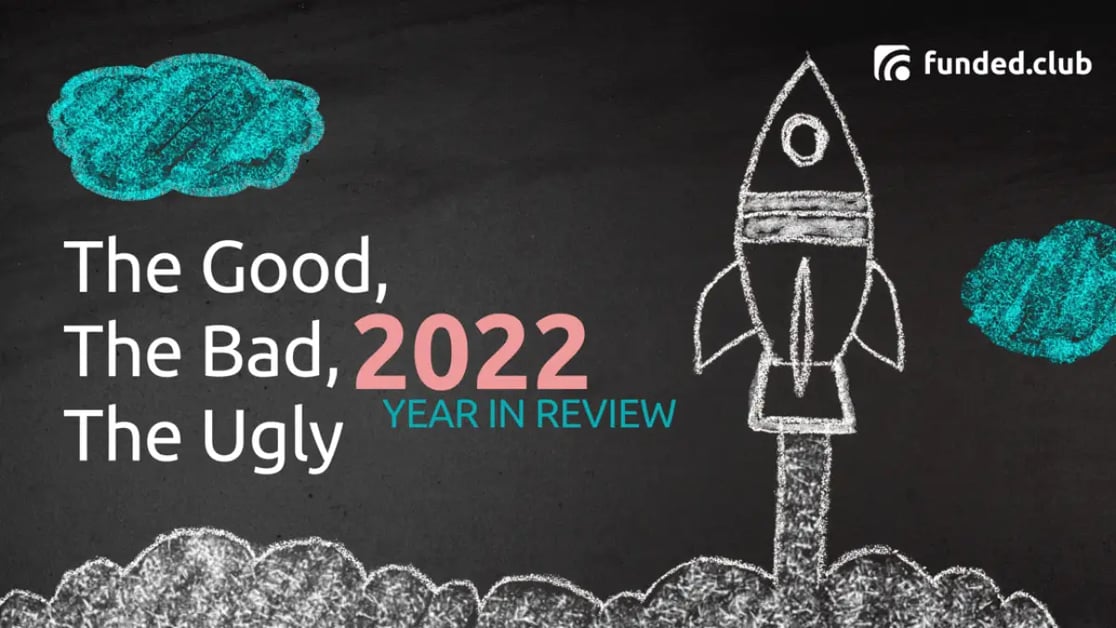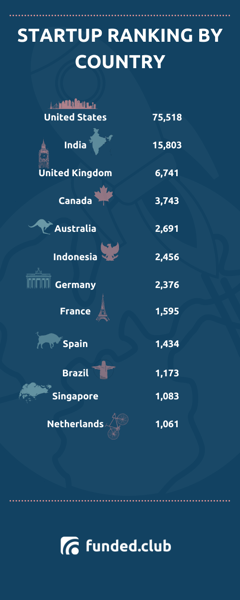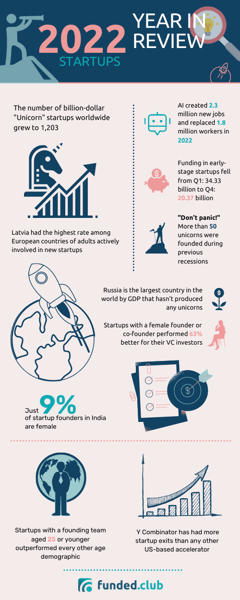
As 2022 is almost over, we can reflect on the many challenges our world has faced in the past 12 months. From climate change and global pandemics to political unrest and economic recession, 2020-2022 will undoubtedly be remembered as some of the most tumultuous years in modern history. Yet, in this time of uncertainty and upheaval, we must confront these issues head-on and work towards a brighter future for humanity.
Let's look at the good, the bad, and the ugly of 2022 together.
Developments in AI
The good news is that artificial intelligence (AI) has made great strides in 2022. For example, we saw significant improvements in facial recognition software and robotics and machine learning advancements.
Experts predict that this growth will continue to accelerate, with AI expected to add $15.7 trillion to the global economy by 2030 – more than the combined production of China and India today!
In 2022, Artificial Intelligence (AI) technology has dramatically improved. Natural Language Generation has enabled computers to understand conversations more efficiently and effectively and helped in creating more natural language processing (NLP).
Additionally, Voice Recognition technology has become increasingly advanced with the advancement of AI. It allows computers to understand human speech and turn it into a format that a computer system can process. The accuracy and speed of speech recognition systems have increased significantly in recent years, allowing them to transcribe short phrases or long conversations quickly and accurately. Voice assistants are predicted to surpass humans in a few years, and the technology continues to become more sophisticated. According to Statista, by 2024, the number of voice assistants could double to 8.4 billion from 4.2 billion in 2020.
AI has the potential to revolutionize creativity, making it easier than ever to create stunning artwork and content. Open AI's DALL·E 2 is an example of a creative AI tool that can generate artwork from text prompts. In addition, you can use this tool with humans to create something entirely new – no expensive stock imagery is required!
The impacts of AI are already being felt across the global economy. It continues to be a hot topic among professionals as we gauge its effect on the workforce. While there are undoubtedly reasonable apprehensions regarding this, the actuality of how AI will affect jobs is more complex than one might think.
According to Statista, AI created 2.3 million new jobs and replaced 1.8 million workers in 2022, with the potential to rise to 97 million new job creations and 85 million replacements in three years. Change is coming quickly, and McKinsey predicts that intelligent robots could take over 30% of the global labor force by 2030.
Rising Inflation
Unfortunately, despite all these technological advancements, inflation still presented challenges in 2022. With inflation continuing to increase amid weak global growth, job security decreased significantly throughout 2022 as employers could not keep up with price increases that outstripped wages or profits. As a result, it is estimated that over 100 million jobs could have been lost due to inflationary pressures during this period, putting financial strain on individuals' households. In addition, inflation led to Increasing poverty levels in many countries already affected by economic downturns caused by COVID-19 restrictions.
The cost of living crisis and the tightening of financial conditions across most regions saw inflation rise to its highest level in decades. This inflation was further fueled by the ongoing war in Ukraine and the global health crisis caused by COVID-19.
Overall, inflation profoundly affected global economies during 2022; its intensity was felt across industries and put immense strain on people's incomes worldwide as prices rose faster than wages or profits could follow suit. In addition, less disposable income meant fewer goods and services purchased overall, leading to decreases in sales for retailers and manufacturers alike, thus further contributing to the stagnation of global economic activity during this period.
The Great Resignation
Following the onset of the COVID-19 pandemic, many jobs were lost, and inflation rates skyrocketed due to economic uncertainty. This combination of factors caused more and more people to question their work-life balance and their ability to make ends meet.
This resulted in an unprecedented wave of workers leaving their existing positions in pursuit of better job opportunities, higher wages, and improved quality of life. This phenomenon was subsequently labeled 'The Great Resignation' by industry professionals as it reached record numbers during this time.
This shift caused a revolution in how people thought about work, with more focus on career satisfaction and fulfillment than ever before. People began prioritising autonomy, flexibility, and variety over stability to navigate their newly uncertain job market. They also looked for meaningfulness in their jobs rather than financial reward alone.
Organizations had no choice but to adapt quickly or risk losing top talent as they scrambled to keep up with employees' changing expectations. Businesses had to become more competitive regarding salaries, benefits packages, workplace culture, and remote-work options.
Social media plays a significant role in facilitating information to 59% of the global population, with an average daily usage of two hours and 29 minutes easily accessible on these networks. However, while social media is gaining popularity daily, the outlook for Twitter does not look so optimistic.
Since Elon Musk's takeover of Twitter, it has been a rollercoaster ride for the platform and its users. Things have certainly taken an unpredictable turn from user complaints to investors worrying over his behavior.
The public mismanagement of Twitter has only damaged further investor confidence in Musk and his ability to lead multiple companies successfully. This is because any erratic behavior on social media could draw unwanted attention to either entity and could have huge repercussions if it causes further drops in stock prices or legal action from other parties involved.
So far, the massive sell-off from Musk's majority stake in Tesla has been met with mixed reactions from investors and analysts alike – with some calling it an intelligent move for diversifying his portfolio. In contrast, others see it as a sign that potential problems within the organization need to be addressed immediately.
On top of this, Elon Musk's $44 billion takeover of Twitter has raised numerous concerns over technical issues and offensive content, leading to a forecasted decrease in users. Insider Intelligence estimates that the global monthly user base will drop by about 4% next year and 5% in 2024 - resulting in more than 32 million lost accounts.
The year 2022 has seen blockchain technology's potential to revolutionize how organizations and communities interact by granting them access to powerful new resources. The development of Decentralized Autonomous Organizations (DAOs) was fascinating, as it enabled organizations to raise and deploy funds quicker than ever in a user-voted system. During the same year, many successful crowdfunding campaigns took off with groundbreaking results, creating new opportunities for charities and causes worldwide.
The blockchain market is expected to reach $67.4 billion by 2026 due to increased investments in the technology and its use in banking, cybersecurity, payment processing, smart contracts, and digital identity management solutions. In addition to this growth in investment, the number of companies using blockchain solutions continues to increase due to their cost-effectiveness and security features. For example, according to recent surveys from PwC and Deloitte, more than 90 percent of European and U.S. banks are researching ways to incorporate blockchain into their operations.
Overall, it is safe to assume that 2022 was only a taste of what blockchain technology can do for us in 2023 - with improved methods for raising capital for charities being just one example among many use cases expected within the coming years. In addition, we will likely experience increased trust in this revolutionary toolset due to its capability for better record keeping and stronger resistance against cyberattacks - all while allowing people greater freedom when making financial decisions or managing personal data online safely and securely!
Startups
Overall, 2022 was a challenging year for startups involving successes and failures. However, despite these issues, many startups managed to survive by pivoting their strategies and coming up with creative solutions to overcome market uncertainty while meeting newly implemented regulations. In doing so, these resilient startups remained afloat despite the turbulent economic environment and set themselves up for success in the years ahead.
According to First Site Guide, each country has its contribution to startup development.

Globally, CB Insights estimates that 1,203 "Unicorn" startups will launch by December 2022. However, while being the largest country in the world by GDP, Russia has yet to produce unicorns. Likewise, Italy has the world's 8th-largest GDP, yet it only made its first unicorn in February 2022. That leaves Russia, Saudi Arabia, and Venezuela as the highest GDP nations without a unicorn. Besides that, approximately 139 of the world's unicorns are in the FinTech industry. Together, they make up 19.5% of the total global unicorn value. Nearly one-third are in the payment technology sub-category. Top FinTech unicorns include Ant Group, Stripe, and Klarna.
Global economic downturns often lead entrepreneurs to find innovative solutions to life's problems. The tech unicorns founded during the 2008 recession are worth nearly $150 billion. Agtech & New Food startups experienced a 128% increase in funding between 2021 and 2022, the most significant increase among all industries. Yet, only 2% of global startups are Agtech & New Food. Among European countries, Latvia has the highest rate of adults involved in new startups. One in five Latvians working age are in the process of founding or are owner-managers of a startup business.
A fascinating insight from FirstRound reveals that VC investors are more likely to invest in startups with female founders.VC firm FirstRound analyzed ten years of data from over 300 companies and found that female-led startups outperform their male-led counterparts. For example, 3 of their top 10 investments went to startups with at least one female founder. However, for example, just 9% of startup founders in India are female. India lags behind the 20% global average for female startup founders, but female-led Indian companies are starting to make waves. For example, Mamaearth, a female who co-founded personal care startup, has raised over $110 million in funding.

Despite the hardships faced during 2022 due to inflation, we have seen tremendous progress with AI and blockchain technology which will continue to shape our future for years to come. As we move forward into 2023 with more knowledge of these technologies than ever before, we must remain committed to finding ways to use them responsibly so that everyone can benefit from their potential applications - no matter their socio-economic status or location!
Thanks for joining us on this journey through 2022; here's wishing you all success in your endeavors going forward!
Leave a Comment